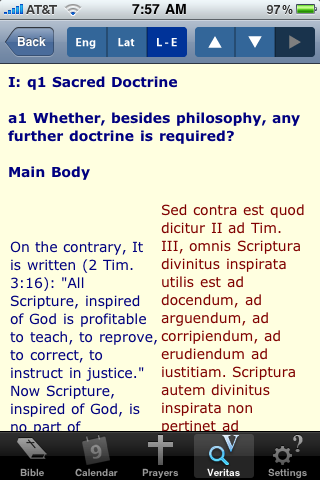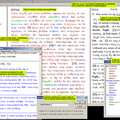This just in, from James Ginther at Saint Louis University:
Theologians Use Video Game Technology to Create Virtual Tour of 13th Century Basilica
Users can fly around structure and see famed frescoes up close
St Louis, MO (9 January 2007) – The Institute of Digital Theology, a non-profit foundation located in St Louis, Missouri and affiliated with Saint Louis University, announced today the release of the CD-ROM, "The Virtual Basilica of Saint Francis of Assisi ."
This new computer software allows users to explore on their own computer this medieval Italian church. The Basilica contains frescoes from the workshops of the early Italian Renaissance painters, Giotto and Cimabue. As a three-dimensional model, the Virtual Basilica permits users to walk and even fly freely about the building.
The Institute has combined gaming technology and digital photography to produce an innovative product. "Most virtual tours of historic buildings combine static, 360-degree panoramas and two dimensional images," noted Dr Jay Hammond, the Institute's President and Co-Director. "We have moved beyond this and have taken advantage of the 3D environment that game engines create." The model is based on laser-accurate measurements of the building and over 4,000 digital images that were taken prior to the disastrous earthquake of 1997. "The result," said Hammond, "is an electronic version of the Basilica before some of its artwork was irreparably damaged."
"We also chose a game engine to build the model," added Dr James Ginther, Vice-President and Co-Director, "because it would ensure the Virtual Basilica would run on the average PC and not on expensive computers that only universities can afford." The Institute's mission, Ginther continued, is to connect preservation of the past with the widest possible access today.
The CD-ROM also has maps and guides for the artwork so that the virtual visitor can learn about the artists, what the pictures depict and their written sources. It also reveals how each fresco fits into the larger narratives of the building. "Church wall paintings and frescoes were meant to tell a story," said Hammond, "and the Virtual Basilica can help the modern observer to understand once again the stories the Basilica of St Francis."
Built in the thirteenth century, the Basilica has stood over 700 years as a monument to the life and work of St Francis, the founder of the Franciscan order. The main set of frescoes tells the story of Francis' conversion to a life of poverty and simplicity and how he became an inspiration for the reform of European Christianity. That message has shaped his order of "lesser brothers" who have continued to teach his message to all Christians. In the last few decades, the Basilica has also become a place for an inter-religious prayer service three times.
With the upper level of the basilica complete, the Institute will create similar virtual tours of the lower church, crypt and exterior gardens. In June, a design team will break virtual ground on another major project: a virtual tour of York Minster in York, England, the largest Gothic church in northern Europe
As the Institute is a non-profit foundation, all proceeds from the sales of the CD-ROM will support academic research in the Franciscan Tradition and advancements in digital media, such as electronic texts and databases as well as virtual modeling of historic sites.
The software is designed for Windows 2000/NT/XP. It is available for purchase the Institute's web-site, www.digitaltheology.org and on Amazon.
The Institute of Digital Theology is a non-profit foundation, affiliated with Saint Louis University. Its mission is to support research and teaching in Theological Studies and related Humanities disciplines through the creation of multimedia projects, web-based databases and other electronic resources. Housed in the University's Department of Theological Studies, the Institute focuses primarily on the preservation of historical artifacts and texts that have significant religious or theological meaning.
Contact:
Institute of Digital Theology
Room HU 124
3800 Lindell Blvd
St Louis, MO 63108
Email: publicity@digitaltheology.org
Web: http://www.digitaltheology.org
Now, let's see them do the same thing for Santa Sabina in Rome or San Domenico in Naples!





